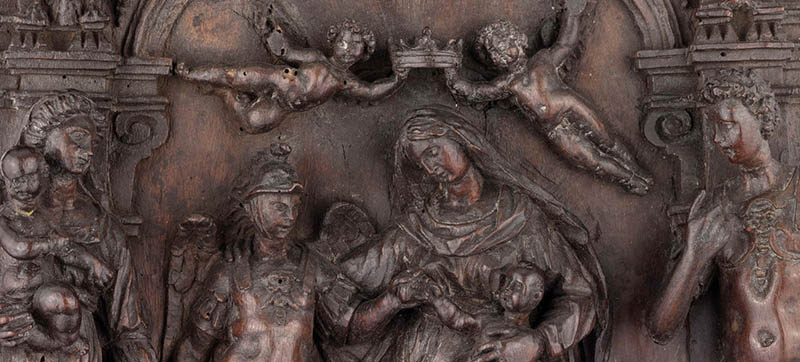The sales of Furniture and Decorative Arts are, by definition, the sum of a whole host of types of objects, a real cross-section of the history of art and collecting (and, why not?, of taste, too).
Our long stroll through the centuries, where sculpture has a non-secondary role, from the Fifteenth century to the Eighteenth century, begins with a wooden altarpiece made by a Lombard wood-carver from the late-gothic period and painted by a Lombard painter from the area of the Alps. The work is intriguing on account of the familiar and inviting appearance in which it presents for the contemplation of the faithful a triptych with holy characters representing women. It represents an unknown example of an altarpiece from the second half of the Fifteenth century that combines both sculpture and painting in a style that possessed a sort of dreamy late-gothic appearance matched with a more decisive renaissance appeal.
As far as the Sixteenth century is concerned, an intense bronze by Guglielmo della Porta portrays Pope Paul Farnese III in old age, dressed in a cope and decorated with plaques in bas-relief, from 1546-47. Its translation into white inlaid marble from Carrara and yellow alabaster is at the Museo Nazionale di Capodimonte in Naples, where there are, as a matter of fact, a further two similar portraits.
A baroque bas-relief in carved walnut by a sculptor from Siena who was active around 1620-1630 portrays the Madonna seated upon a throne with baby Jesus on her lap with two Angels crowning her and, on her left, St John with the Agnus Dei and on her right St Michael Archangel. This is an object that bears great appeal and iconographical complexity in which symbols occupy the surface area of the work completely and possess a rhythm that looks as if it is undertaking some sort of forward-moving acceleration before your very eyes.
Lastly, an inlaid commesso table top in hard stones and Sicilian jasper from the last quarter of the Eighteenth century is a magnificent example of this particularly refined and sumptuous decorative technique that sinks its roots deep down into classic antiquity and that in Italy, and Florence first of all, achieved levels of the utmost skill and ability that had already become unsurpassable in the Sixteenth century. They were extremely decorative objects and were much sought-after by all the aristocratic élites from all over Europe and still today continue to be highly-prized by collectors all over the world.
1986 Views |
Like





